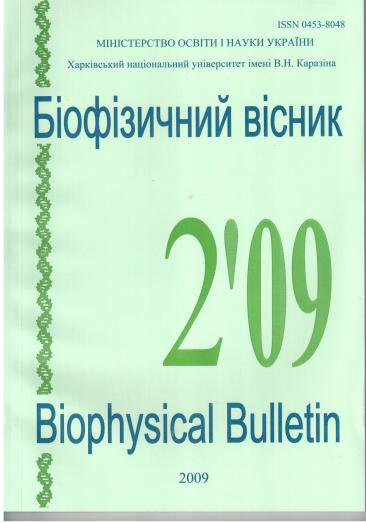Dynamic model of process of the air passage through the nasal cavities
Abstract
The analysis of the aerodynamic processes occurring in the nasal cavities and determining the basic respiratory function of the upper respiratory trajectories is made. The difference in phase between the periodically alternative exterior pressure and the airflow inside simulated nasal airway is established. The relation between energy dissipation of airflow as a coordinate function and frequency of respiration is determinate. Is shown, that at a small frequency of respiration the maximum of the respiration power dissipation is on-axis of the nasal airway, and with diminution of frequency is displaced in the nasal wall.
Downloads
References
діагностиці захворювань порожнини носа, навколоносових пазух і лицьового черепа // ЖВНГХ.– 2001.–
№ 2.– С. 64.–69.
2. Бачинський.І.В., Рижик В.М., Гайналь М.О., Дудій П.Ф. Можливості комп’ютерної томографії при
діагностиці захворювань верхньощелепних пазух //.− 1999.- №3.- С. 54 − 56.
3. Безшапочний С.Б., Лобурець В.В. Ендоскопічна ендоназальна функціональна хірургія: достоїнства,
недоліки, перспективи //Ринологія.- 2002.- №2.- С. 3 − 10.
4. Лойцянский Л.Г. Механика жидкости и газа, М.: «Наука», − 1970, − 904 с.
5. Chometon F.,Gillieron P., Laurent J.,Ebbo D., Korfman P., Lecomte F., Sorrel-Dejerin N. Analyse
Sientifique de l’Aérodinamique des Fosses Nasales. Actes du 106éme Congrés Paris (France) d’Oto-RhinoLaryngologie et de Сhirurgie de la Face et du Cou 1999.
Authors who publish with this journal agree to the following terms:
- Authors retain copyright and grant the journal right of first publication with the work simultaneously licensed under a Creative Commons Attribution License that allows others to share the work with an acknowledgement of the work's authorship and initial publication in this journal.
- Authors are able to enter into separate, additional contractual arrangements for the non-exclusive distribution of the journal's published version of the work (e.g., post it to an institutional repository or publish it in a book), with an acknowledgement of its initial publication in this journal.
- Authors are permitted and encouraged to post their work online (e.g., in institutional repositories or on their website) prior to and during the submission process, as it can lead to productive exchanges, as well as earlier and greater citation of published work (See The Effect of Open Access).





